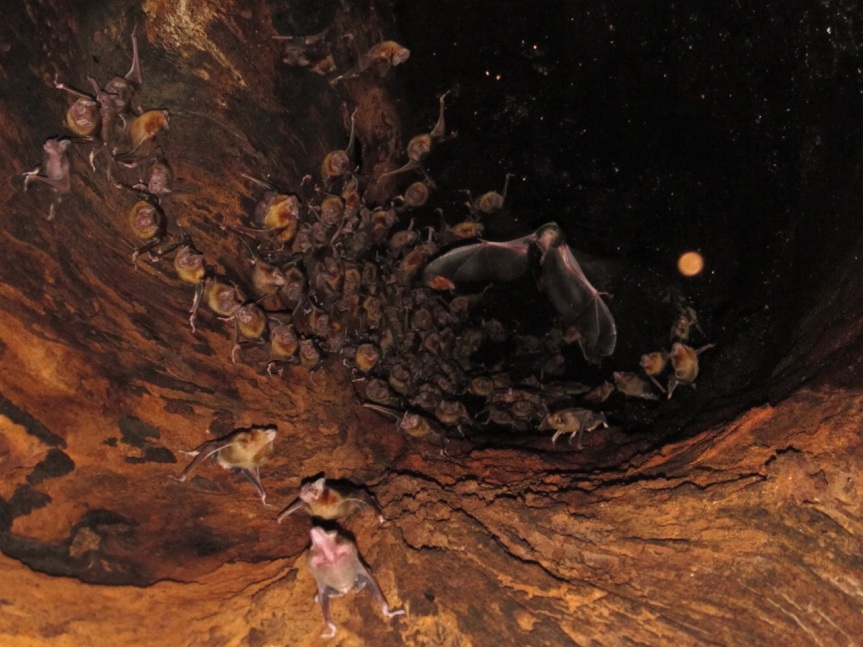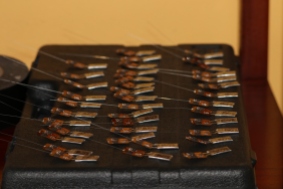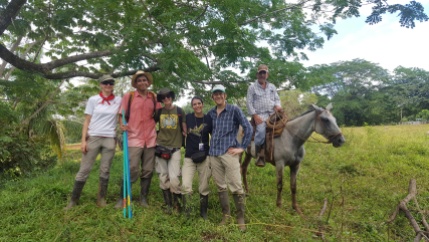After almost 2 years of cooperation experiments in captivity, we are now attempting to monitor the social relationships of our vampire bats as we release them back into the wild. We are hoping to track bat-bat and bat-cow encounters. To do this, we are attaching networked proximity sensors to 23 previously captive and captive-born bats with known social relationships and 27 new wild-caught female bats. We are then placing the cattle “prey” in a new location they have never been before. A grid of tracking stations will hopefully allow us to reconstruct their flight paths as they approach the cattle. We are also sampling their microbiomes to look at the microbiome similarity between bats within the colony, and at changes with the move from captivity to the wild.
This collaboration involves an international team of researchers including a very generous landowner, several local cowboys, two postdoc biologists (Simon Ripperger and Gerry Carter), two engineering students developing the software and hardware (Björn Cassens and Niklas Duda), several more engineers back in Germany, two field biologists helping with fieldwork and bat wrangling (Jineth Berrío-Martínez and Darija Josic), two PhD students doing the microbiome sequencing (Karthik Yarlagadda and Aura Raulo), and two principle investigators based in Panama and Germany (Rachel Page and Frieder Mayer).
The captive-born bats have apparently so far survived the transition to life in the wild (it’s their sixth day), but the tropical climate is putting the new technology to a difficult challenge. How well will the captive-born bats be integrated into the group? Will relationships formed in captivity be maintained in the wild? Do food-sharing bats also forage together? Hopefully, we will have some answers soon.
Here’s the post describing when we captured the bats from the roost (below).

This project was funded by the National Geographic Society, the Smithsonian Institute, and the German Research Foundation (DFG).




























4 thoughts on “Tracking our vampire bats after they are released into the wild”